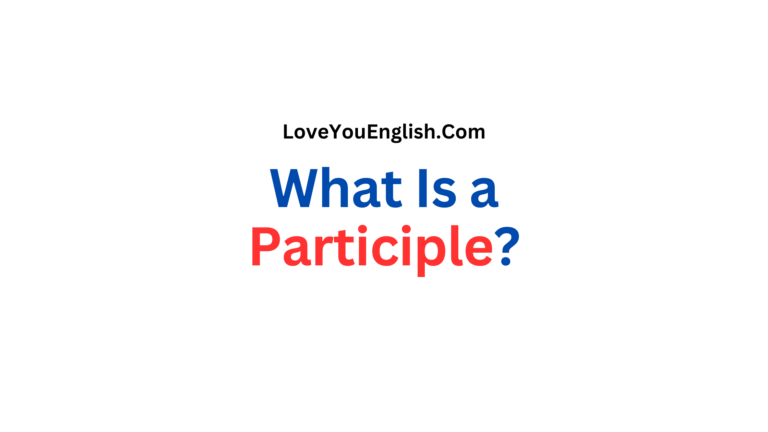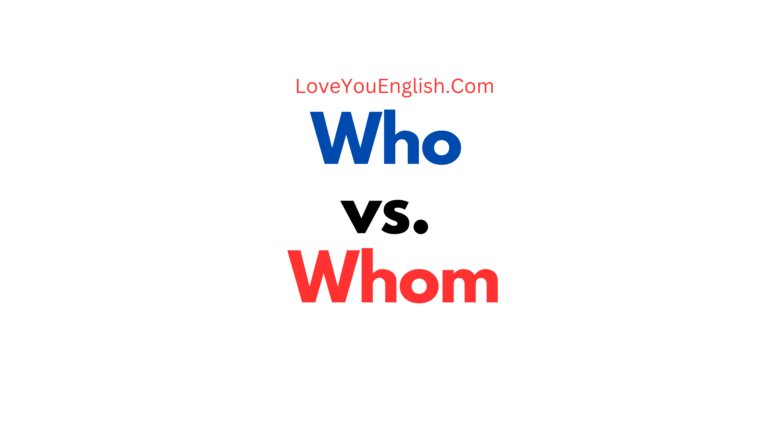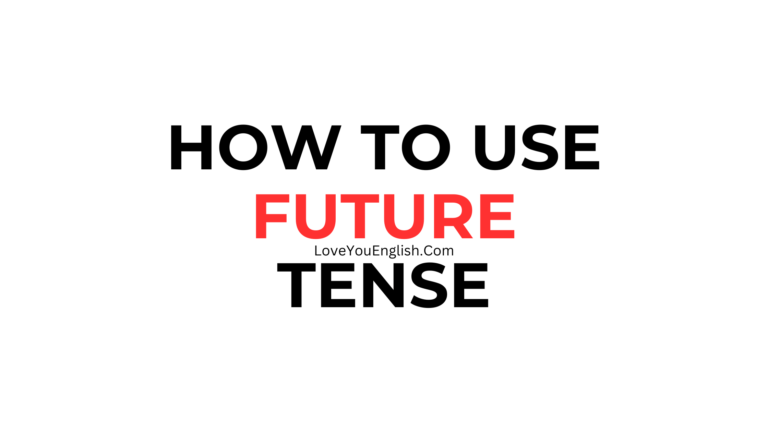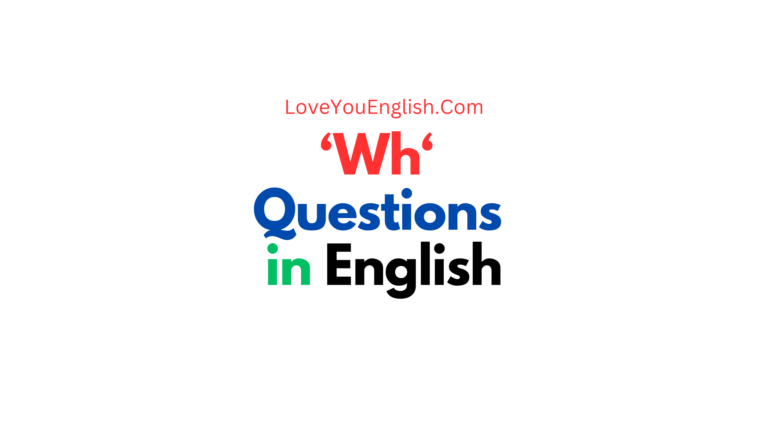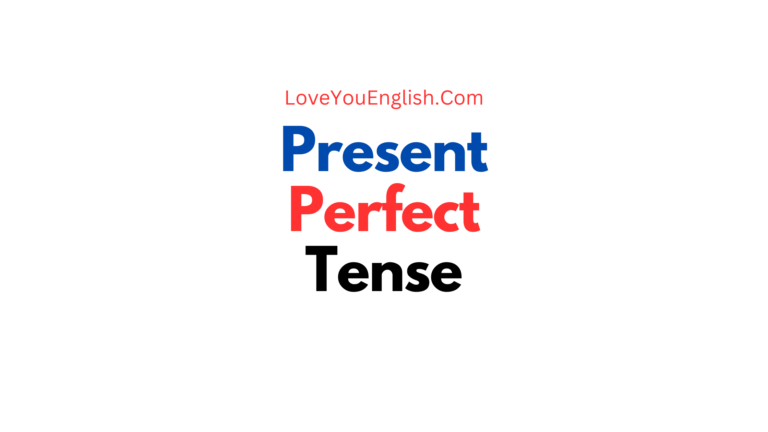The Verb “To Be” Explained, With Examples
Introduction to the Verb “To Be”
The word “to be” is one of the most common and important words in English.
We use it a lot when we talk and write, but it can be really tricky.
In this blog post, we’re going to take a close look at the word “to be,” explaining all the different ways we use it and giving lots of examples.
Whether you’re a native English speaker who wants to get better at grammar or someone who’s learning English as a second language, it’s really important to understand the word “to be.”
We use it to talk about how things are, to say who or what something is, to make continuous tenses, and much more.
By the time you finish reading this post, you’ll know all about this really important word.
Basic Forms of “To Be”
Let’s start with the basic forms of “to be” in the present tense:
- I am
- You are
- He/She/It is
- We are
- You (plural) are
- They are
These forms change in the past tense:
- I was
- You were
- He/She/It was
- We were
- You (plural) were
- They were
And in the future tense, we use “will be” for all persons:
- I will be
- You will be
- He/She/It will be
- We will be
- You (plural) will be
- They will be
It’s important to note that “to be” is an irregular verb, meaning it doesn’t follow the standard patterns for verb conjugation in English.
Uses of “To Be”
The verb “to be” has several main uses in English:
a) Describing a state or condition:
Example: “I am tired.” / “The weather is cold.”
b) Identifying or defining something:
Example: “She is a doctor.” / “This is my favorite book.”
c) Indicating location:
Example: “The keys are on the table.” / “We are at home.”
d) Forming continuous tenses:
Example: “I am reading a book.” / “They were playing soccer.”
e) Forming passive voice:
Example: “The letter was written yesterday.” / “The cake is being baked now.”
f) Expressing age:
Example: “I am 30 years old.” / “How old are you?”
g) Telling time:
Example: “It is 3 o’clock.” / “What time is it?”
h) Describing characteristics:
Example: “She is intelligent.” / “The house is big.”
“To Be” in Different Tenses
Now let’s look at how “to be” is used in various tenses:
Present Simple:
“I am happy.” / “They are students.”
Present Continuous:
“She is studying right now.” / “We are having dinner.”
Past Simple:
“I was sick yesterday.” / “They were late for the meeting.”
Past Continuous:
“He was working when I called.” / “We were watching a movie at 8 PM.”
Present Perfect:
“I have been a teacher for ten years.” / “They have been married since 2010.”
Past Perfect:
“By the time I arrived, she had been waiting for an hour.”
Future Simple:
“I will be there at 6 PM.” / “They will be happy to see you.”
Future Continuous:
“This time next week, I will be lying on a beach.”
Future Perfect:
“By next month, I will have been living here for five years.”
“To Be” in Passive Voice
The verb “to be” is crucial in forming the passive voice in English.
The passive voice is used when we want to focus on the action rather than the doer of the action.
Here’s how it works:
Active: “John wrote the letter.”
Passive: “The letter was written by John.”
The passive voice is formed by using a form of “to be” + the past participle of the main verb.
Here are some examples in different tenses:
Present Simple Passive:
“The house is cleaned every week.”
Past Simple Passive:
“The movie was directed by Steven Spielberg.”
Present Continuous Passive:
“The car is being repaired right now.”
Past Continuous Passive:
“The new policy was being implemented when the CEO resigned.”
Present Perfect Passive:
“The report has been finished.”
Past Perfect Passive:
“The building had been abandoned for years before it was demolished.”
Future Simple Passive:
“The new store will be opened next month.”
Common Phrases and Idioms with “To Be”
The verb “to be” is used in many common phrases and idioms in English.
Here are some examples:
“To be or not to be” – A famous quote from Shakespeare’s Hamlet, often used to talk about existence or difficult choices.
“Be yourself” – Act naturally, don’t pretend to be someone you’re not.
“Be that as it may” – Used to admit that something is true while stating that it doesn’t alter the main point being made.
“To be in hot water” – To be in trouble.
“To be on cloud nine” – To be extremely happy.
“To be under the weather” – To feel slightly ill.
“To be all ears” – To listen attentively.
“To be over the moon” – To be extremely pleased or happy.
Tricky Aspects and Common Mistakes
While “to be” is a fundamental verb, it can still cause confusion.
Here are some tricky aspects and common mistakes to watch out for:
a) Agreement with collective nouns:
In American English, collective nouns (like team, family, government) are usually treated as singular:
“The team is playing well.”
In British English, they can be treated as plural:
“The team are playing well.”
b) It’s vs. Its:
“It’s” is a contraction of “it is” or “it has.” “Its” is the possessive form of “it.”
Example: “It’s raining, and the dog is wagging its tail.”
c) There is vs. There are:
Use “there is” with singular nouns and “there are” with plural nouns.
Correct: “There is a book on the table.” / “There are books on the table.”
d) Was vs. Were in the subjunctive mood:
Use “were” for hypothetical situations, regardless of the subject.
Example: “If I were you, I would accept the offer.”
e) Confusion with other verbs:
Some learners confuse “to be” with other verbs like “have” or “do.”
Incorrect: “I am 30 years.” (should be “I am 30 years old” or “I have 30 years”)
f) Double negatives:
Avoid using “not” with negative words like “never,” “nothing,” etc.
Incorrect: “I am not never late.” (should be “I am never late”)
Practice Exercises
To help solidify your understanding of the verb “to be,” try these exercises:
Exercise 1: Fill in the blanks with the correct form of “to be” in the present tense:
- I ____ a student.
- She ____ happy today.
- They ____ at the park.
- We ____ excited about the trip.
- It ____ raining outside.
Exercise 2: Change these active sentences to passive:
- John cleans the house every week.
- The chef is preparing the meal.
- They will announce the winners tomorrow.
- Someone has stolen my bike.
- The police were chasing the thief.
Exercise 3: Correct the mistakes in these sentences:
- The team are playing well.
- If I was rich, I would buy a yacht.
- There is many people at the party.
- Its going to rain tomorrow.
- I am having 25 years old.
(Answers to these exercises can be found at the end of this post.)
Conclusion:
The word “to be” is super important in English, and it’s really important to get good at using it.
I’ve talked about the basics, different ways to use it, how it works in different times, when it’s used in passive sentences, common sayings and phrases that use it, and some tricky stuff to be careful about.
Just like anything else in language, getting good at “to be” takes practice.
If you mess up, don’t worry – even people who grew up speaking English sometimes have trouble with the harder parts of this word.
The key is to keep using it when you talk and write, pay attention to how other people use it, and learn from your mistakes.
Whether you’re talking about how you feel right now (“I am tired”), pointing something out (“This is my house”), showing something happening right now (“She is working”), or making a passive sentence (“The letter was sent”), “to be” is a really important tool in your English toolbox.
Keep practicing, and before you know it, using “to be” correctly will be like second nature.
Because, in the end, being a master of English grammar or not being one – that’s the big question!
Answers to Practice Exercises:
Exercise 1:
- am
- is
- are
- are
- is
Exercise 2:
- The house is cleaned every week by John.
- The meal is being prepared by the chef.
- The winners will be announced tomorrow.
- My bike has been stolen.
- The thief was being chased by the police.
Exercise 3:
_____________________
Check out these awesome grammar books I recommend:
High School English Gram & Comp – by WREN & MARTIN
OXFORD ENGLISH GRAMMAR COURSE ADVANCED WITH KEY (WITH EBOOK)


